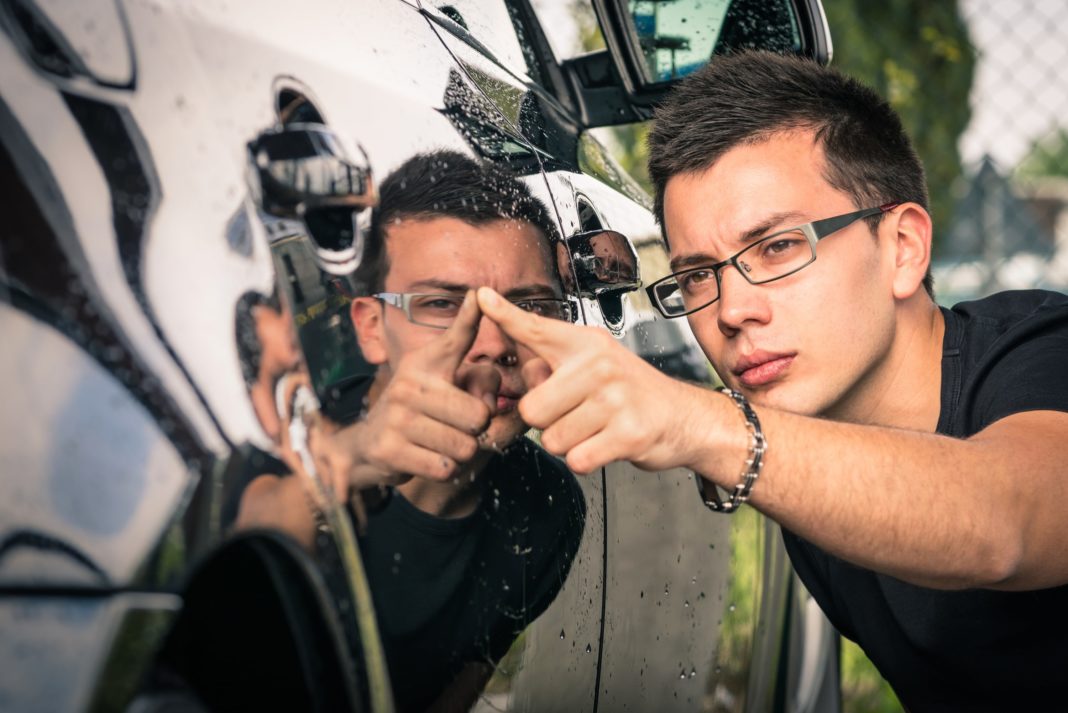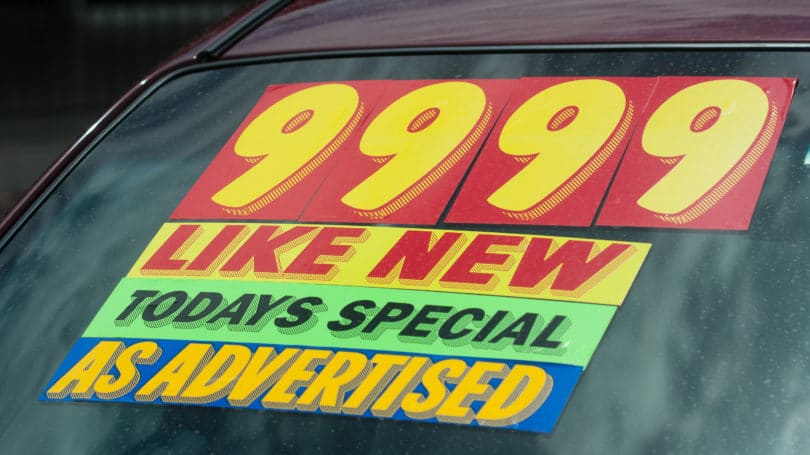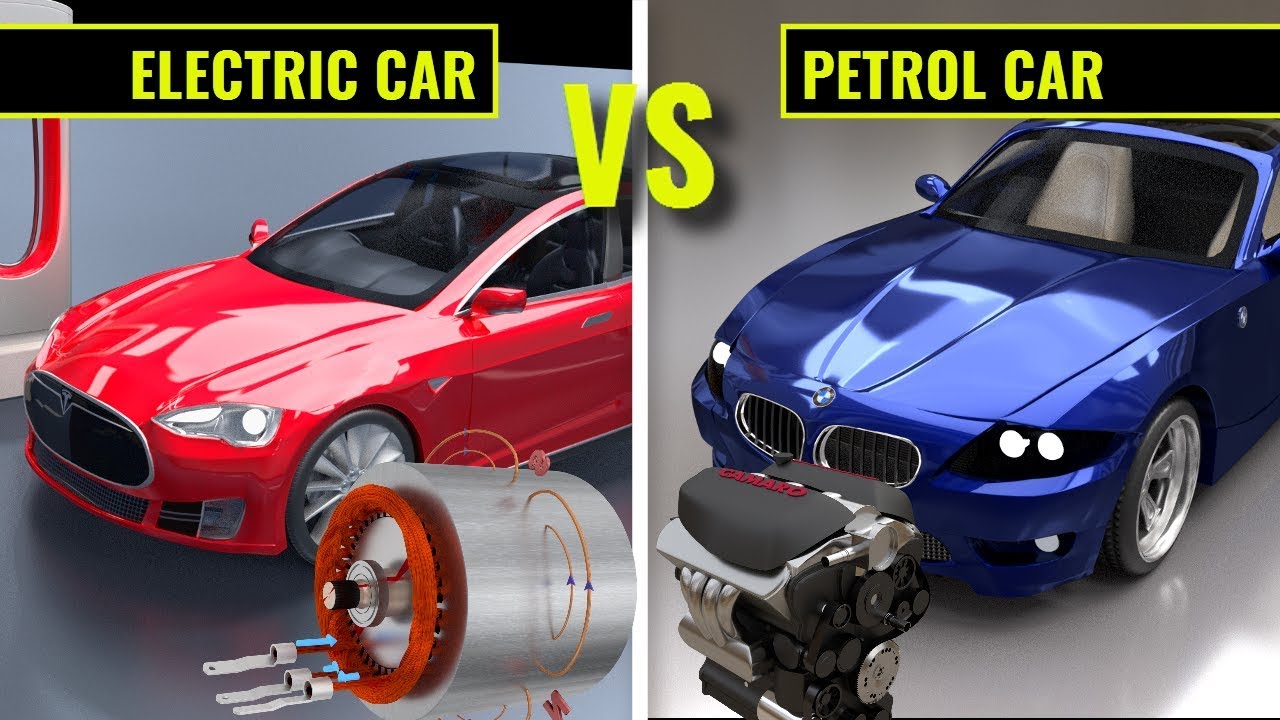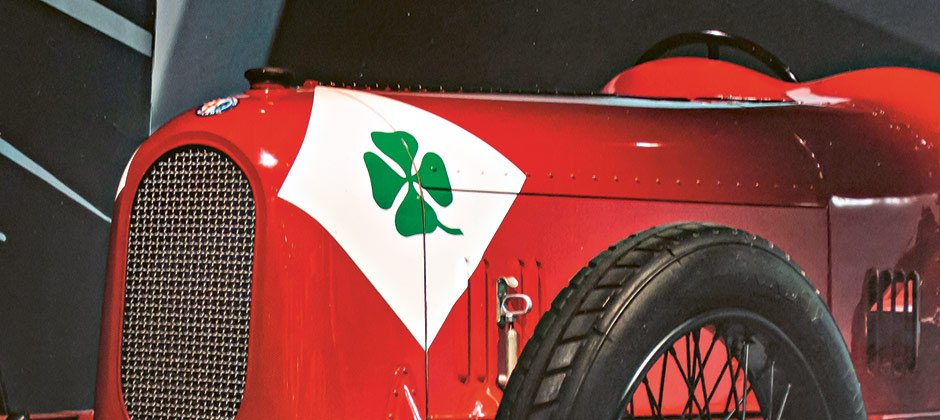Here they are :

You’ve decided to purchace your first used car – and with an economy still struggling to find its former luster and a rapidly growing new car market, that’s certainly a smart choice. However, the real challenge is the purchase process – the act of matching mechanical and financial wits with the salesperson and driving off into the sunset without getting suckered.
The ideal used car is not the cheapest one you can scrape off your local dealership or get from a private seller on OLX. If its fuel efficiency is poor and it requires heavy maintenance work every other month, then your finances are in for a rough ride. After all, even used cars aren’t exactly short-term investments.
When shopping used, your goal is to find a decently performing car that fits within your budget – and that budget should account not just for the car itself but for operating costs, maintenance costs, warranties, and so on. A used car can either turn out to be a blessing or a nightmare – so to avoid the latter, here are signs to watch out for.
What to Avoid When Shopping for a Used Car
1. Misaligned Body Parts
Misaligned body panels are one of the most commonly observed imperfections in used cars. However, what many sellers try to pass off as minor surface irregularities could be masking something a lot more sinister, such as a major car accident. This is why it’s crucial to ensure that car doors and body panels, as well as the trunk and hood gaps, are evenly aligned.
For instance, a used car with a CAPA (Certified Automotive Parts Association) sticker on one of its parts is a clear sign that the car has undergone collision repair for that part. More obvious issues, such as dents and structural kinks, are easier to spot on the car body. Upon closer inspection, if you notice any irregularities in width between the seams lining the car doors, fenders, or hood, then it surely means that the car has seen worse days than what the salesman claims, and may not be worth the price or risk of ownership.
2. Shady Interiors
Sellers may try to oversell the luxurious outer appearance of a used car to entice buyers. However, they might also be trying to cover up poor interior comfort and design.
If there are rips, stains, or cracks that cannot be easily fixed, then you may need to look for another used car. Analyzing reviews and model pictures of a car when it was new can give you a good idea about its original interior design and the extent of its deterioration.
Also, be aware that stains and discolorations in the car’s upholstery may be signs of past flooding, which could lead to electrical problems down the road. On the other hand, brand new upholstery is also something to be wary of because it may be an attempt to cover up water damage. Examining the interior helps you better assess the comfort factor and quality of materials used, and also plan for more effective utilization of storage space in the car.
3. Dealership Financing Offers That Are Too Good to Be True
Car financing is easy, and a lot of dealerships are hellbent on making that process “easier” by offering you the “best interest rates in the market.” Keep in mind that used car dealers are middlemen hoping for a cool commission while offering you a car loan. They aren’t doing you any special favors just because you’re buying a used car. You should be even more wary if they present a car loan with an interest rate that is extraordinarily better than market rates – generally, only 10% of buyers qualify for 0% or low-interest dealer loans.
If you’re a first-time buyer with a not-so-impressive credit rating, then watch out for special financing offers. They often carry the burden of a huge down payment and a high APR, which can turn into a big financial liability for you down the line. It’s even possible that such a contract could have deceptive terms and conditions in order to conceal other fees involved, such as a prepayment penalty.
Therefore, you should always shop around and research bank rates and local lender rates before signing your car loan. Local lendors represent another good financing alternative, as they typically offer interest rates 1% to 2% lower than bank rates.

4. Pushy Salespeople With Impulsive Negotiation Tricks
Being a used car buyer, you need to keep your emotional and impulsive decisions in check. A little research and business savvy can help you strike the perfect bargain for your used car purchase. Remember, the customer is always king, so do not hesitate to make the seller play by your rules.
A sound ballpark figure is the foundation of a productive negotiation between you and the seller. But first, you must first be familiar with the car’s bottom-line price by consulting websites like CarZar and the like, You can also buy a Used Car Report from CreditUnion to find out what dealers pay for a car. Car Magazines is another option that shows you how much other consumers pay for a new car.
Just like automakers, used car dealerships also like to advertise special rebates and cash back incentives on certified pre-owned cars to attract more customers. Before paying a visit to a dealership, research the incentives offered on its website to see which you qualify for.
5. Manipulated Odometer Clocking
The average mileage on cars hovers around 10,000 per year. If the odometer doesn’t add up with the age and appearance of the used vehicle you’re looking at, then something fishy may be going on. Here are some signs that can help confirm your suspicions regarding a car’s mileage:
- Cars that have been through plenty of motorway journeys should definitely exhibit numerous chips made by stones across the front of the bonnet, grille, and bumper. A car with low miles accrued is not likely to show heavy signs of superficial wear-and-tear. If a car with low mileage has such wear, it could be a sign the odometer has been changed.
- Worn out seat belt webbing, pedal rubbers, and steering wheel. More wear indicates a more heavily used – meaning driven – vehicle.
- Car service records can help you track the maintenance work done on it by the listed garages and confirm the mileage recorded during its last service.
6. Stubborn Steering Gear
Buying a used car with a worn out steering mechanism or damaged linkage is not just financially unwise, it’s extremely dangerous. Here’s all you need to do to make sure your car steering is running smoothly:
- With the car idling, turn the steering wheel right and left to check if there is any slack or clunking noise.
- While taking it out for a test drive on a smooth, flat road, your steering wheel shouldn’t behave shakily and require constant wheel balancing efforts to correct your course.
This could also mean that there are issues with your car’s driveline, tires, suspension, or frame, which means there’s likely to be an unpleasantly high maintenance investment to make somewhere down the line.
7. Malfunctioning Engine Light
Engine lights are the windows into a car’s soul. They give you a live display of your car’s performance and help you guide it more efficiently. So if used car salespeople tell you that a malfunctioning engine light isn’t a big deal, do not simply take them at their word.
Get a mechanic to use an OBD code reader, or get a product like CarMD, to find out the error code. You can then research the specific code and check whether it’s a problem worth worrying about. If the engine light doesn’t come on immediately – or comes on after a long delay – when you turn the key in the ignition, it could be a sign of a seller tampering and trying to hide a problem from you.
8. Shaky Suspension
Fear the death rattleis a warning often thrown around by mechanics and experienced drivers. It’s the dreaded rapping, banging noise that comes from the engine of a car, especially when it hasn’t warmed up yet. If you feel strange vibrations in the steering wheel, then there may be a problem in the front due to the steering linkage. On the other hand, if you experience vibrations in the car seat, then there could be a problem in the back of the car, such as with a wheel bearing or the condition of a tire.
Check the car suspension by pushing down each fender and quickly letting go. It should rebound softly at least once or twice. If you observe any more rebounds than that, it means you’re dealing with weathered shock absorbers. Hence, you might experience excessive jerks and bounces even while traveling on smooth surfaces at moderate speeds. If you feel the vehicle tends to drift while making turns, then it’s a clear sign your car shocks need to be repaired since they are putting your vehicle at risk of a dangerous rollover.
Additionally, if the suspension in the used car is worn out, then it is a lot more likely to leave behind uneven tire tread marks on the ground. This is a sign that the suspension is failing and there’s an uneven amount of pressure on the tires.
9. Tailpipe in Bad Condition
Customers tend to favor a smooth test drive as the ultimate performance measure for a used car, and they forget to inspect the little things that matter too. A tailpipe is one of these little things that give you an indirect measure of your car’s internal health.
Here are the four different types of smoke patterns that can emerge from the car’s tailpipe:
- Puff of White Smoke While Starting Up. This is a result of condensation, and is no cause for panic.
- Black Smoke After the Car Has Warmed Up. A sign of excessively rich air-fuel mixture due to a dirty air filter, a defective oxygen sensor, or mass-air meter (moderate investment in repairs required).
- Blue Smoke. The result of oil burning (extensive investment in repairs needed).
- Billowing White Smoke. Water logging in combustion chamber due to a blown head gasket, or damaged cylinder head (extensive investment in repairs needed).
As far as exhaust smoke analysis goes, cloudy white or blue colored smoke patterns should be enough to send you looking for another car because of the costly damage they indicate. On the other hand, black or deep grey, or misty white smoke patterns are not such deal breakers since they indicate damage that can be fixed with low to moderate investment in repairs.

10. Insufficient Car Paperwork
An utter lack of service or maintenance records isn’t the hallmark of a reliable and responsible seller – and furthermore, it’s not likely anyone would sell a car at a bargain price if it still performed as good as new and never needed much maintenance.
In case you’re still interested in a vehicle lacking paperwork, it’s recommended that you get your own independent inspection done from a trusted mechanic to diagnose the car properly. You can also get your hands on a comprehensive vehicle history report from sources such as CreditUnion or Natis. This can allow you to check the number of previous owners and failed inspections, and whether it has been salvaged or stolen.
Unfortunately, the practice of car cloning has made it easier for sellers to fool customers. Car cloning essentially means stealing the license plate off one vehicle and placing it onto a different, unconnected vehicle. Therefore, if there are any fines or liabilities associated with the licensed number plate, the owner of the cloned car becomes answerable for the illegality.
If you’re a victim of this crime, you can lose both the car and the money once the authorities find out. If this doesn’t scare you into being thorough with your car paperwork, nothing ever will.
Final Word
Believe it or not, used car scams are far from uncommon, and a little vigilance can go a long way in helping you score the right deal. The last thing you want on your plate is a piece of portable junk that pinches your debt-squeezed account harder. Even if you do not possess exceptional mechanical knowledge, you can still do a little research in advance before heading to a used car dealership to figure out what you need and what you should avoid.
Have you ever gone used car shopping? What else should first-time customers watch out for?

 Dynamics 365 Virtual En...
Dynamics 365 Virtual En... Modern Cars vs. Classic...
Modern Cars vs. Classic... Electric vs. Combustion...
Electric vs. Combustion... What does the clover le...
What does the clover le... 15 words only total car...
15 words only total car...